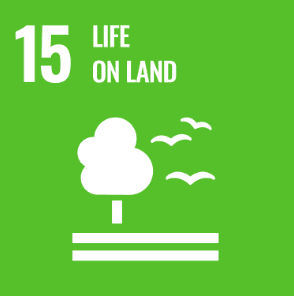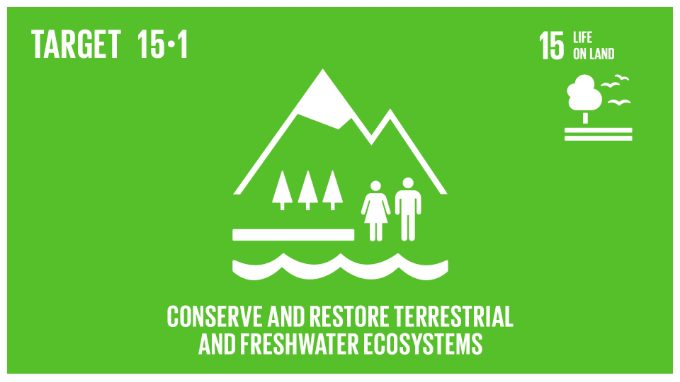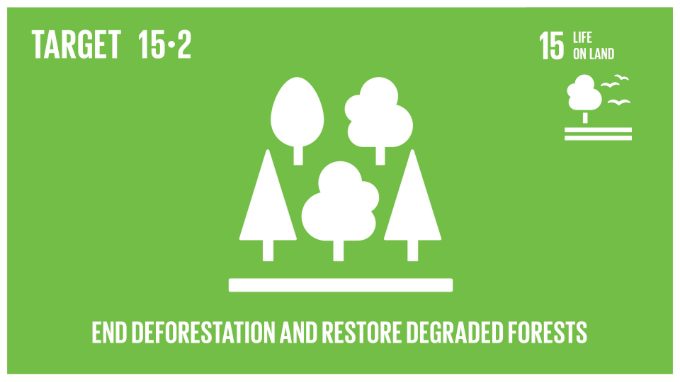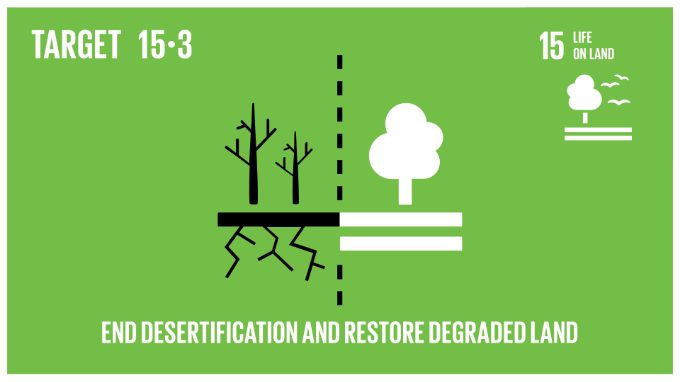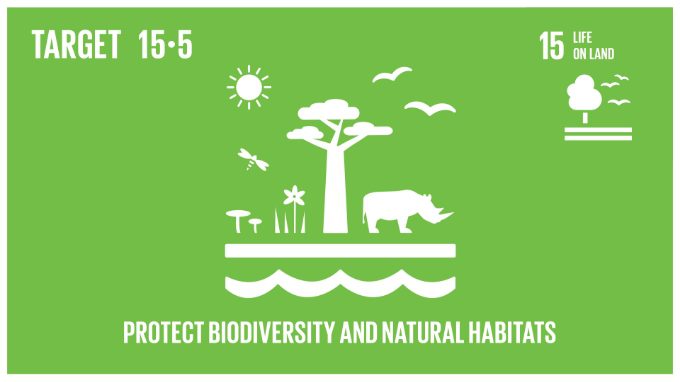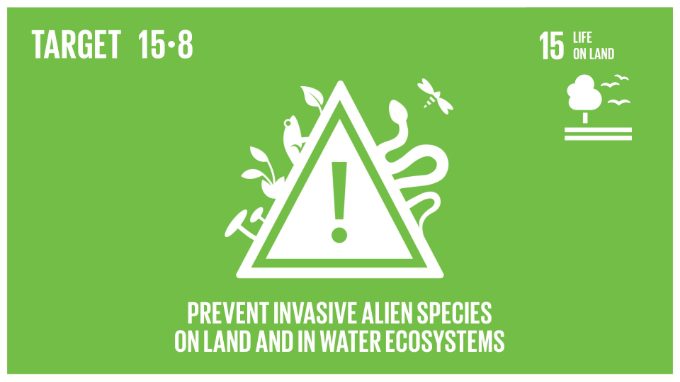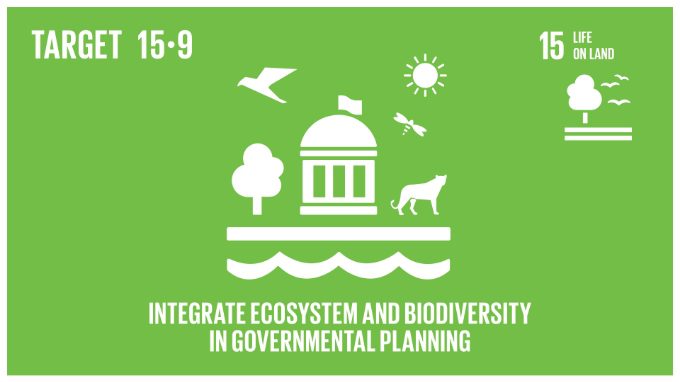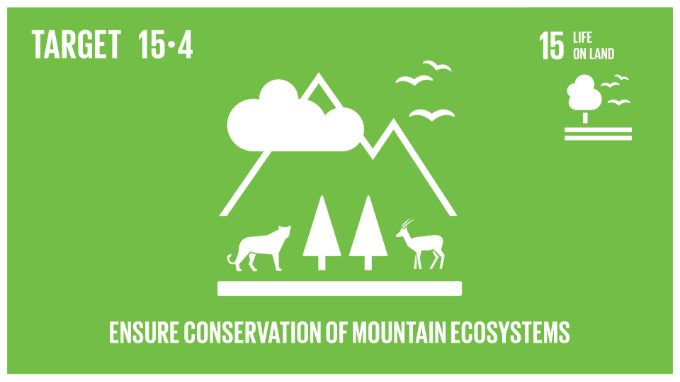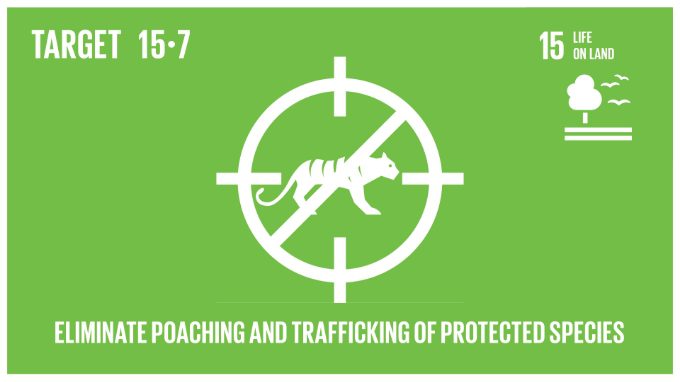Overview:
A flourishing life on land is the foundation for our life on this planet.We are all part of the planet’s ecosystem and we have caused severe damage to it through deforestation, loss of natural habitats and land degradation. Promoting a sustainable use of our ecosystems and preserving biodiversity is not a cause. It is the key to our own survival.
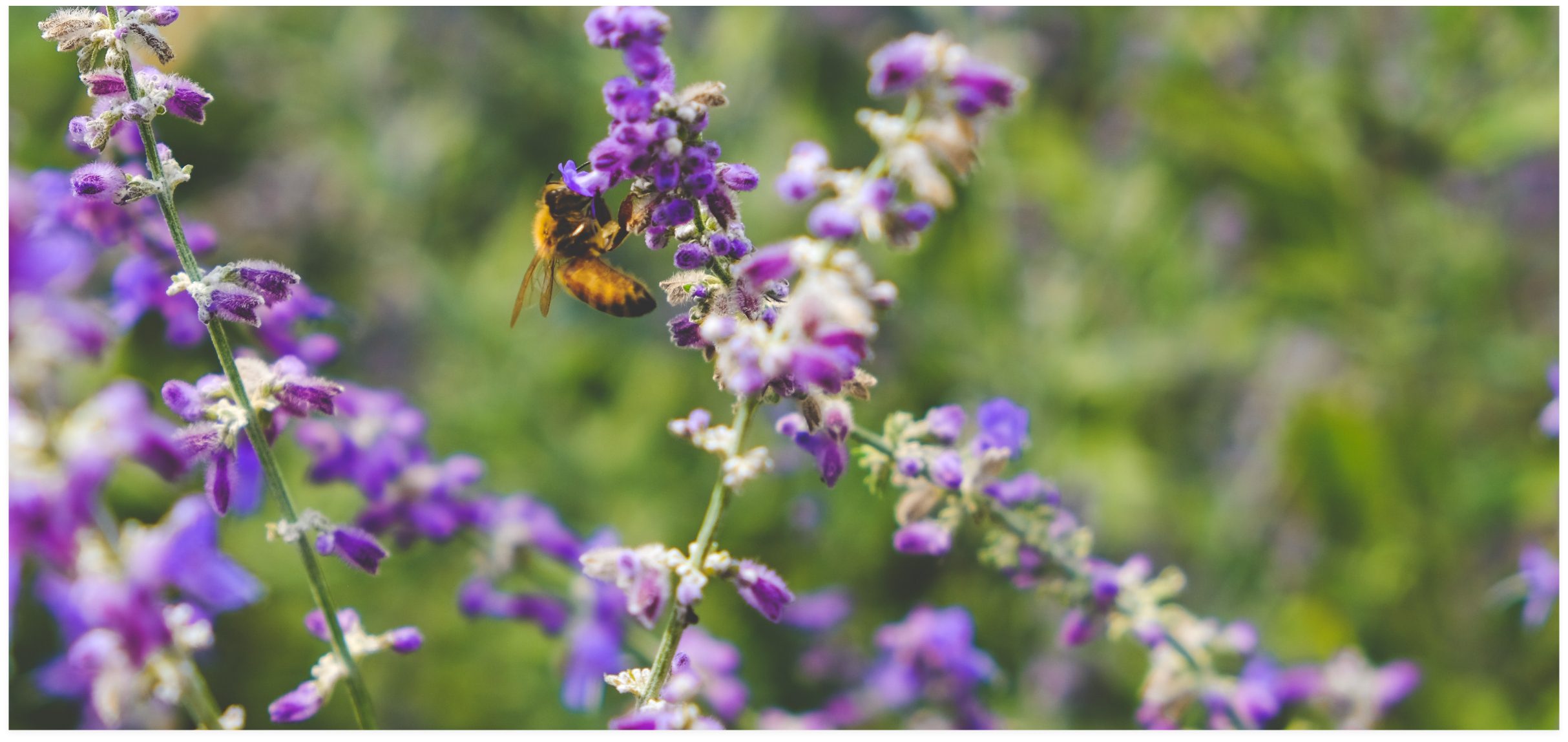
International Progress 2023:
The world is facing a triple planetary crisis of climate change, pollution and biodiversity loss. The trend in forest loss, land degradation and the extinction of species is becoming worse, posing a severe threat to the health of the planet and people. Goal 15 will not be met without a dramatic shift in our relationship with our natural environment.
Targets —
-

Target 15.1 / 14.5 / 15.4
Globally, coverage over recent years of marine, terrestrial, freshwater, and mountain KBAs has continued to increase to nearly half of each site covered in 2022, on average, but growth in coverage has slowed and coverage is uneven regionally, threatening progress towards the restoration and conservation of these ecosystems.
-

Target 15.2
The world’s forest area continues to decline, from 31.9% in 2000 to 31.2% in 2020, representing a net loss of 100 million hectares. Agricultural expansion is the direct driver for almost 90% of global deforestation. However, globally, there has been progress in sustainable forest management with both certified forest areas and the proportion of forests under management plans and within protected areas increasing.
-

Target 15.3
Between 2015 and 2019, the world lost at least 100 million hectares of healthy and productive land every year, affecting food and water security globally. Human activities, intensified by climate change, are the main drivers of land degradation, directly affecting 1.3 billion people. If land degradation continues at a similar rate, this would result in an additional 1.5 billion hectares of degraded land by 2030. To reach the target of ensuring a land degradation neutral world by 2030, avoiding new land degradation and restoring at least one billion degraded hectares of land are needed.
-

Target 15.5
Species extinction is irreversible, and thus perhaps the most fundamental human impact on nature. Globally, the Red List Index— derived based on repeat assessments of every species across groups of mammals, birds, amphibians, corals, and cycads- deteriorated by about 4% from 2015 to 2023. However, over the last three decades since 1993, the Index has deteriorated 10%, with each decade deteriorating at a faster rate than the previous one. In 2022, comprehensive assessments of reptile species found that 21% of species are threatened with extinction. All indications are a deterioration in trend toward the target to halt the loss of biodiversity and, by 2020, protect and prevent the extinction of threatened species.
-

Target 15.6
At the end of 2022, 68 countries had at least one legislative, administrative or policy measure in place to ensure the fair and equitable sharing of benefits arising from the use of genetic resources and associated traditional knowledge in accordance with the Nagoya Protocol (an increase of 62 countries since 2016). Furthermore, 88 countries reported measures in place to implement the International Treaty on Plant Genetic Resources for Food and Agriculture (an increase of 76 countries since 2015).
-

Target 15.8
Nearly all countries have now adopted national legislation relevant to the prevention or control of invasive alien species, mainly embedded within laws regarding cross-cutting sectors such as Animal Health, Plant Health, Fisheries and Aquaculture; and 87% have aligned to global targets. The COVID-19 pandemic has brought an increased focus on the prevention, control, and management of biological invasions of pathogenic agents, particularly zoonotic pathogens, in order to mitigate their negative impacts on biodiversity and human health.
-

Target 15.9
There has been a steady upward trend in the number of countries incorporating biodiversity values into national accounting and reporting systems. By December 2022, most countries (90%) had established national targets in relation to Aichi Biodiversity Target 2. However, only about a third of countries are reporting that they are on track to reach or exceed their national targets. In addition,92 countries indicated implementation of the System of Environmental-Economic Accounting (SEEA) in 2022 and the number of countries is expected to grow over the next few years due to the role of SEEA in the Global Biodiversity Framework.
Ireland’s
Progress 2023:
Despite its green image, Ireland’s biodiversity is not in god health. The most recent report by the National Parks and Wildlife Service (NPWS) on the status of habitats and species protected under the Habitats Directive show that an abysmal 85% of habitats are in unfavourable (i.e. inadequate or bad) status, with 46% of habitats demonstrating ongoing declining trends – a situation that has remained largely unchanged since Ireland’s initial assessment in 2007. A fifth of Irish birds are in long-term decline, and the Curlew, once ubiquitous across the Irish countryside, has undergone a population decrease of 96% and a reduction in range of 78% between 1980 and 2018.
Ireland’s forestry sector is also highly intensive with plantation forests dominating total forest cover in Ireland. 60% of Ireland’s national forest is made up of non-native conifers, with 44.6% being made up of just one species: Sitka spruce. Ireland’s unnatural and industrial model of forestry is very unusual in a European context. For example, Ireland has over 85% plantation forest share, one of the highest levels in Europe and the highest share of forest area dominated by introduced tree species (>60%). This is in stark contrast to Europe as a whole where the forest area is dominated by semi-natural forest cover.
According to the National Parks and Wildlife Service the main pressures / threats to Ireland’s protected habitats are agriculture and other land uses such as extraction of resources (e.g. peat mining), forestry, urbanisation, recreation and invasive species. Agriculture is by far the greatest threat and pressure impacting on 70% of surveyed habitats. However many threatened habitats and species are actually dependent on farming for their survival and therefore in many instances it’s a case of supporting the right kinds of farming and space for nature on farms rather than no farming. The next most frequent category of pressure on habitats is “Alien and problematic species” (listed as a pressure in 42% of habitats), closely followed by “Development, construction and use of residential, commercial, industrial and recreational infrastructure and areas”, a pressure in 41% of habitats.
Targets —
-

By 2020, ensure the conservation, restoration and sustainable use of terrestrial and inland freshwater ecosystems and their services, in particular forests, wetlands, mountains and drylands, in line with obligations under international agreements.
CSO data
Claim: Achieving
15.1.1 Forest area was 808,848 hectares in 2022, 11.6% of Ireland’s land area.
15.1.2 Ireland’s SPA network covers 597,000 hectares of marine and terrestrial habitats.
15.1.1
Forest area as a proportion of total land area
15.1.2
Proportion of important sites for terrestrial and freshwater biodiversity that are covered by protected areas, by ecosystem type
-

By 2020, promote the implementation of sustainable management of all types of forests, halt deforestation, restore degraded forests and substantially increase afforestation and reforestation globally.
CSO data
Claim: Achieving
15.2.1 A new forest strategy titled ‘Ireland’s Forest Strategy 2022–2030’ is under development through Project Woodland. This is being informed by comprehensive engagement and public consultation which has led to a draft Shared National Vision for the role of trees and forests in Ireland to 2050.
15.2.1
Progress towards sustainable forest management
-

By 2020, combat desertification, restore degraded land and soil, including land affected by desertification, drought and floods, and strive to achieve a land- degradation-neutral world.
CSO data
Claim: Achieving
15.3.1 Ireland’s landscape is predominantly rural and agricultural. Artificial surfaces account for just under 2.5% of the land surface, significantly below the Europe-wide average of 4%. Agriculture and forestry land-use account for 67.6% and 9.6% of the national land area respectively with wetlands accounting for a further 14.9%.
15.3.1
Proportion of land that is degraded over total land area
-

By 2030, ensure the conservation of mountain ecosystems, including their biodiversity, in order to enhance their capacity to provide benefits that are essential for sustainable development.
CSO data
Claim: Achieving
15.4.1 In April 2019, Ireland submitted the third assessment of conservation status for 59 habitats and 60 species (including three overview assessments of species at a group level). A further eight species are considered to be vagrant in Ireland.
15.4.2 The National Landcover Map is published by the Environmental Protection Agency (EPA) and Tailte Eireann which provides accurate estimates and very detailed information on land cover in Ireland.
15.4.1
Coverage by protected areas of important sites for mountain biodiversity
15.4.2
Mountain Green Cover Index
-

Take urgent and significant action to reduce the degradation of natural habitats, halt the loss of biodiversity, and, by 2020, protect and prevent the extinction of threatened species.
CSO data
Claim: Achieving
15.5.1 National Parks and Wildlife Service (NPWS) and the Northern Ireland Environment Agency are working together with national experts and with the National Biological Data Centres North and South to produce regional red lists for the island of Ireland. The production of red lists is an action under our National Biodiversity Plans. Red lists are published on an irregular basis, as and when datasets and the necessary national expertise for taxonomic groups become available.
15.5.1
Red List Index
-

Promote fair and equitable sharing of the benefits arising from the utilization of genetic resources and promote appropriate access to such resources, as internationally agreed.
CSO data
Claim: Achieving
15.6.1 Data is available on the UN SDG Global Database.
15.6.1
Promote fair and equitable sharing of the benefits arising from the utilization of genetic resources and promote appropriate access to such resources, as internationally agreed
-

Take urgent action to end poaching and trafficking of protected species of flora and fauna and address both demand and supply of illegal wildlife products.
CSO data
Claim: Achieving
15.7.1 The NPWS are responsible for the Convention on International Trade in Endangered Species of Wild Fauna and Flora (CITES ) Management and Scientific Authorities for Ireland. Ireland became a CITES Party in 2002.
15.7.1
Proportion of traded wildlife that was poached or illicitly trafficked
-

By 2020, introduce measures to prevent the introduction and significantly reduce the impact of invasive alien species on land and water ecosystems and control or eradicate the priority species.
CSO data
Claim: Achieving
15.8.1 Ireland’s NPWS provide information on EU Regulation on Invasive Alien Species. Some of the core provisions of EU Regulation 1143/2014 which deal with, among other things, bringing into the territory of the Union, keeping, breeding, transporting and placing on the market, species included on the list of invasive alien species of Union concern (the “Union List”).
15.8.1
Proportion of countries adopting relevant national legislation and adequately resourcing the prevention or control of invasive alien species
-

By 2020, integrate ecosystem and biodiversity values into national and local planning, development processes, poverty reduction strategies and accounts.
CSO data
Claim: Achieving
15.9.1(a) Data is available on the UN SDG Global Database.
15.9.1
(a) Number of countries that have established national targets in accordance with or similar to Aichi Biodiversity Target 2 of the Strategic Plan for Biodiversity 2011–2020 in their national biodiversity strategy and action plans and the progress reported towards these targets; and (b) integration of biodiversity into national accounting and reporting systems, defined as implementation of the System of Environmental-Economic Accounting
-

Mobilize and significantly increase financial resources from all sources to conserve and sustainable use biodiversity and ecosystems.
CSO data
Claim: Achieving
15.a.1(a) Ireland’s Official Development Aid was $47.36 million in 2020.
15.a.1
(a) Official development assistance on conservation and sustainable use of biodiversity; and (b) revenue generated and finance mobilized from biodiversity-relevant economic instruments
-

Mobilize significant resources from all sources and at all levels to finance sustainable forest management and provide adequate incentives
to developing countries to advance such management, including for conservation and reforestation.CSO data
Status: Data not available
15.b.1 No data available
15.b.1
(a) Official development assistance on conservation and sustainable use of biodiversity; and (b) revenue generated and finance mobilized from biodiversity-relevant economic instruments
-

Enhance global support for efforts to combat poaching and trafficking of protected species, including by increasing the capacity of local communities to pursue sustainable livelihood opportunities.
CSO data
Claim: Achieving
15.a.1(c) Data is available on the UN SDG Global Database.
15.c.1
Proportion of traded wildlife that was poached or illicitly trafficked


